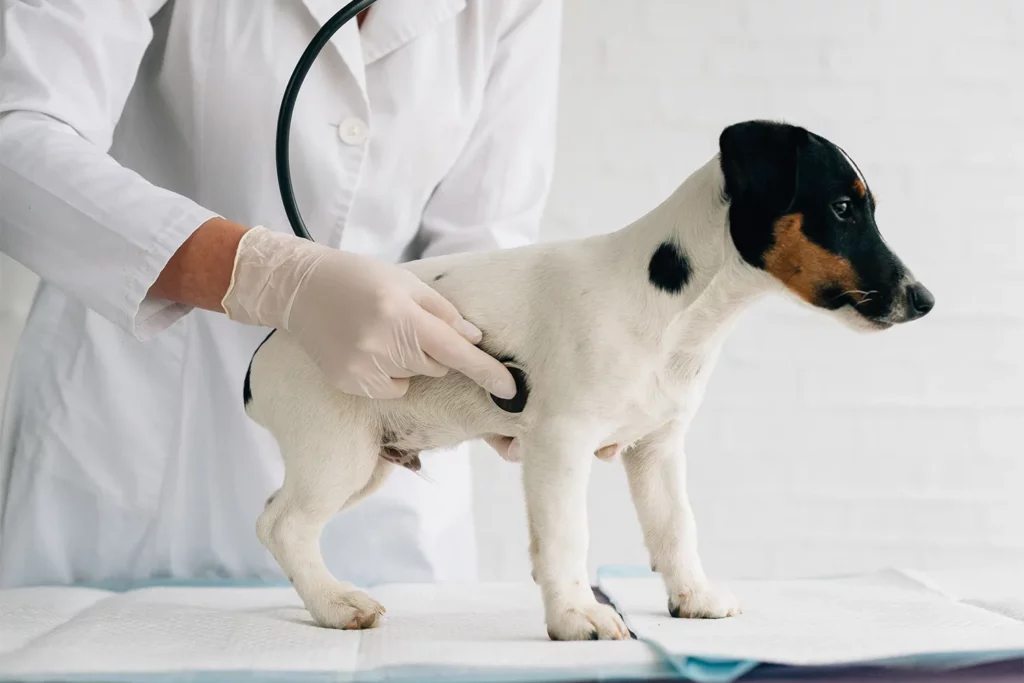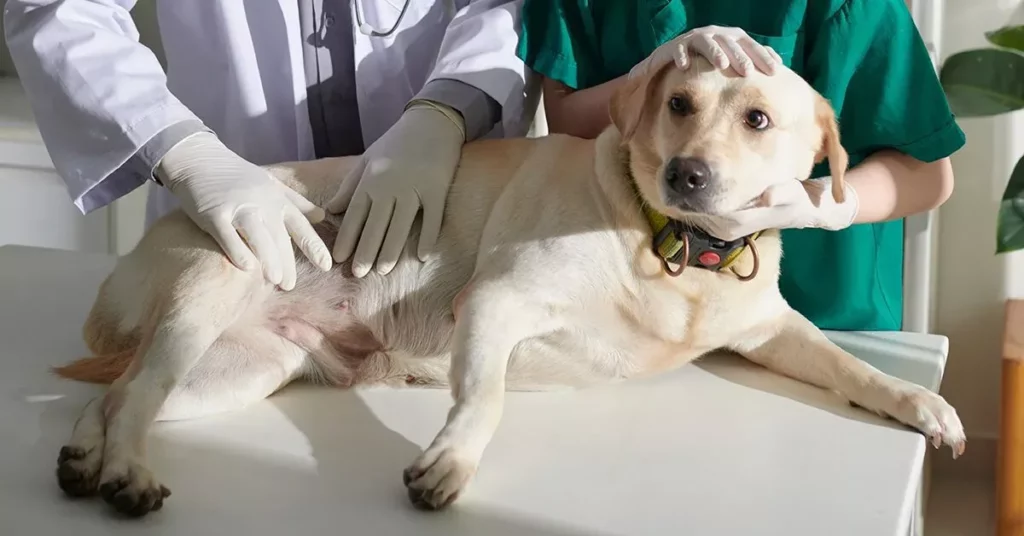Are you a caring dog owner who wants to know the signs of bloat in dogs? Here, you will get to know the signs of bloat in dogs.

Bloat, or Gastric Dilatation-Volvulus (GDV), is a serious and life-threatening condition that can affect dogs, particularly those with deep chests.
Furthermore, recognizing the signs of bloat is crucial for seeking prompt veterinary attention.
As you keep reading, you will get to know the eight common indicators that may suggest your dog is experiencing bloat.
Signs of Bloat in Dogs

Here are eight clear signs of bloat in dogs:
1. Distended Abdomen
A primary and visible sign of bloat is a distended abdomen.
If your dog’s stomach appears swollen and tense, it can be a clear indication of gastric dilatation.
In addition, bloat occurs when the stomach fills with gas, fluids, or food, causing it to expand rapidly.
The distension is often visible, creating a rounded or bloated appearance, and is a critical sign that requires immediate attention.
2. Unsuccessful Attempts to Vomit
Dogs with bloat often attempt to vomit repeatedly but are unsuccessful.
The retching may be persistent and unproductive, signifying an obstruction in the digestive system.
Furthermore, this unproductive vomiting, combined with the distended abdomen, is a classic symptom of bloat and indicates a serious emergency.
3. Restlessness and Pacing
Restlessness, pacing, or an inability to find a comfortable position are common behavioral changes associated with bloat.
If your dog is displaying heightened agitation, it’s a concerning sign.
Also, the discomfort caused by the bloated stomach can lead to restlessness as the dog seeks relief from the pain or discomfort.
4. Difficulty in Breathing
Bloat can exert pressure on the diaphragm, leading to difficulty in breathing.
Rapid or labored breaths, accompanied by visible distress, are alarming indicators of potential bloat.
The compromised respiratory function is a severe consequence of bloat and requires immediate veterinary attention.
5. Excessive Drooling From the Dog’s Mouth
Excessive drooling, especially if it’s out of the ordinary for your dog, can be a sign of distress.
Bloat may cause excessive salivation due to the discomfort and difficulty swallowing.
The drooling is often a result of the dog’s body attempting to alleviate the discomfort caused by the bloated stomach.
6. Pale or Discolored Gums
Inspect your dog’s gums for any signs of paleness or discoloration.
Bloat can compromise blood flow, leading to inadequate oxygenation, reflected in changes to the gum color.
Pale or discolored gums are a critical indication that the dog is in a state of shock and requires immediate medical attention.
7. Weakness or Collapse
Severe cases of bloat can lead to weakness or collapse.
If your dog shows signs of lethargy, inability to stand, or sudden collapse, it requires urgent veterinary attention.
Weakness and collapse indicate a critical stage of bloat, and without prompt intervention, it can be fatal.
8. Elevated Heart Rate
Bloat can cause an increase in heart rate as the body attempts to compensate for the compromised cardiovascular function.
Monitoring your dog’s heart rate and noting any significant elevation is crucial.
An elevated heart rate is an additional indicator of the severity of the condition and underscores the urgency of seeking veterinary care.
In conclusion, bloat is a medical emergency, and swift action is paramount. If you observe any of these signs in your dog, seek immediate veterinary assistance.
Quick intervention is essential for the best chance of successful treatment and the well-being of your canine companion.
Related Searches:

Leave a Reply